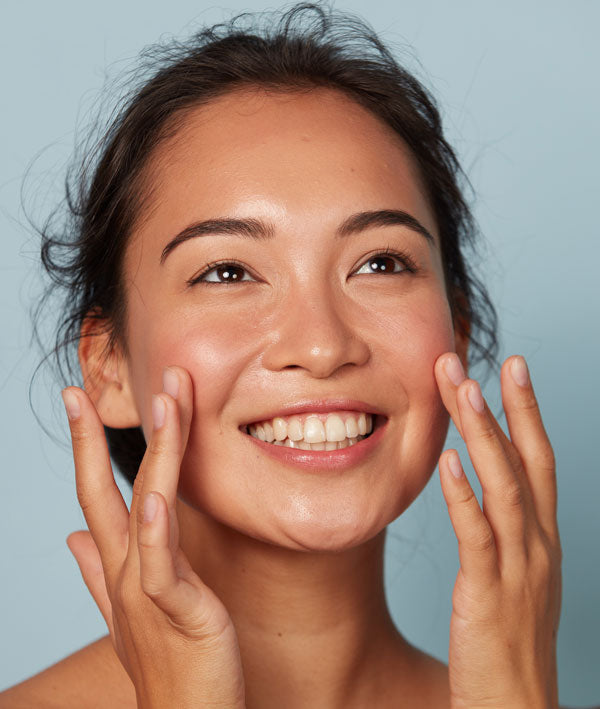There’s nothing more frustrating than starting the day with a fresh face of makeup, only to see it ball up, flake off, or look patchy just hours later. If you’ve ever experienced little flakes or clumps forming on your skin after applying your skincare or foundation, you’ve encountered the annoying issue known as makeup pilling. The good news? This common cosmetic problem is avoidable—once you understand what causes it and how to build a smarter skincare and makeup routine.
What Is Makeup Pilling and Why Does It Happen?
Makeup pilling occurs when the products you apply—like serums, moisturizers, sunscreen, or makeup—don’t properly absorb into your skin and instead gather on the surface. As you layer products or touch your face throughout the day, those layers begin to roll or ball up, creating a flaky or uneven texture.
The “pills” are usually a result of product build-up, ingredient incompatibility, or improper application. It can happen immediately after applying makeup, or hours later as the skin reacts to the product stack. Either way, the result is the same: your makeup doesn’t sit smoothly and ends up looking patchy, dry, or cakey.
Top Reasons Your Makeup Is Pilling by the End of the Day
Several factors can lead to makeup pilling. Identifying the root cause is key to finding the right solution:
-
Layering too many products too quickly: One of the most common culprits is rushing through your skincare routine. When each product hasn’t had time to absorb, the layers can build on top of each other and result in pilling.
-
Too much silicone: Many primers and some foundations contain silicones for a smooth, silky texture. However, too many silicone-heavy layers (especially when combined with silicone-based skincare) can repel each other and cause pilling.
-
Product incompatibility: Sometimes, the formulas simply don’t work well together. For example, oil-based and water-based products may not mesh, causing one to lift the other off the skin.
-
Using too much product: Applying generous amounts of serum, moisturizer, or SPF can seem like you’re doing your skin a favor, but too much product can lead to excess residue that never fully absorbs.
-
Dead skin buildup: If your skin hasn’t been properly exfoliated, dead skin cells can mix with products and create flakes or patches.
How Skincare Products Can Contribute to Pilling
The wrong skincare choices—or the wrong combination of products—can directly impact how well your makeup wears. Here’s how:
-
Silicone-heavy formulas: Many hydrating serums, moisturizers, and primers contain dimethicone or other silicones to lock in moisture and smooth texture. But when layered incorrectly or used with other silicones, they can slide over each other instead of blending seamlessly.
-
Oily vs. water-based products: Water and oil don’t mix, so if you apply a water-based serum followed by an oil-heavy sunscreen or foundation (or vice versa), one may sit on top of the other and cause pilling.
-
Thick moisturizers or balms: While rich moisturizers are excellent for sealing in hydration, they can be too occlusive under makeup—especially in warmer weather—causing foundation or concealer to clump or separate.
Always check the ingredient lists and textures of your skincare. Using lightweight, fast-absorbing formulas can drastically reduce the chance of pilling.
The Right Way to Layer Skincare Before Makeup
Layering skincare correctly is crucial to setting the stage for a smooth, pill-free makeup application. Here’s how to do it the right way:
-
Start with clean, exfoliated skin: Gentle exfoliation (2-3 times per week) ensures there’s no buildup of dead skin cells that could interfere with product absorption.
-
Apply products from thinnest to thickest: Serums → treatments → moisturizers → sunscreen. This allows each product to penetrate effectively without sitting on top of the previous one.
-
Let each layer absorb fully: Give each product 30 seconds to a minute to sink in before moving to the next. Rushing the process can trap unabsorbed layers underneath.
-
Use less product: A pea-sized amount of serum or moisturizer is often enough. Using more doesn’t necessarily give better results—and can lead to excess residue.
-
Pat, don’t rub: Gently patting in your skincare (rather than rubbing) helps the products absorb more evenly and reduces the chance of disrupting the layers.
Once your skincare has set, apply a primer if needed—preferably one that’s lightweight and free from heavy silicones if you’re prone to pilling.
Tips to Prevent Makeup Pilling for a Smoother Finish
Avoiding pilling isn’t just about your skincare routine—it’s also about your makeup techniques. Try these pro tips:
-
Choose compatible formulas: Match your foundation to your skincare base—water-based with water-based, silicone with silicone.
-
Use a damp makeup sponge: Sponges gently press foundation into the skin and prevent dragging or lifting the layers underneath.
-
Skip heavy-duty primers if unnecessary: Some primers can do more harm than good, especially if they clash with your skincare. Opt for minimal primer or go without if your moisturizer preps your skin well.
-
Avoid over-touching your face: Constantly adjusting or blotting your face throughout the day can disturb your makeup and trigger pilling, especially around the nose and chin.
-
Set your makeup properly: A light dusting of translucent powder or a setting spray can lock everything in place and prevent products from moving or bunching up.
Best Skincare Products That Won’t Cause Makeup Pilling
Choosing the right skincare products is one of the most effective ways to ensure your makeup stays flawless from morning to night. Look for lightweight, quick-absorbing, non-comedogenic options that play well with makeup:
-
Hyaluronic Acid Serums: These water-light hydrators provide deep moisture without leaving residue. Our Hyaluronic Pure Boost is an ideal pre-makeup serum that plumps the skin without interfering with foundation.
-
Coenzyme Q10 Serums: Antioxidant-rich and easily absorbed, CoQ10 helps support the skin barrier while remaining makeup-friendly. Try our CoQ10 Boost Serum for radiant skin with zero stickiness.
-
Gel-based moisturizers: Look for oil-free or gel-cream textures that hydrate without heaviness. These are great for all skin types and won’t create a greasy film.
-
Mineral sunscreens with fluid textures: Physical SPFs like zinc oxide in light formulations tend to layer better under makeup than thick chemical sunscreens.
-
Fragrance-free and filler-free products: Fragrance, dyes, and thickeners can cause irritation or disrupt makeup adherence—especially on sensitive skin.
By building a solid base with smart skincare, you not only protect your skin but also set the stage for makeup that lasts longer, looks better, and feels weightless all day long.






